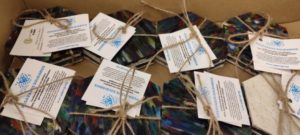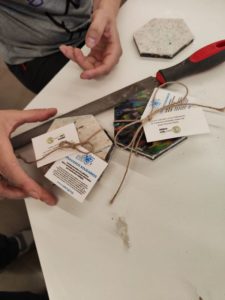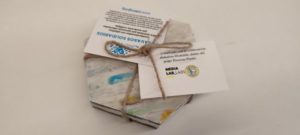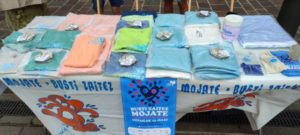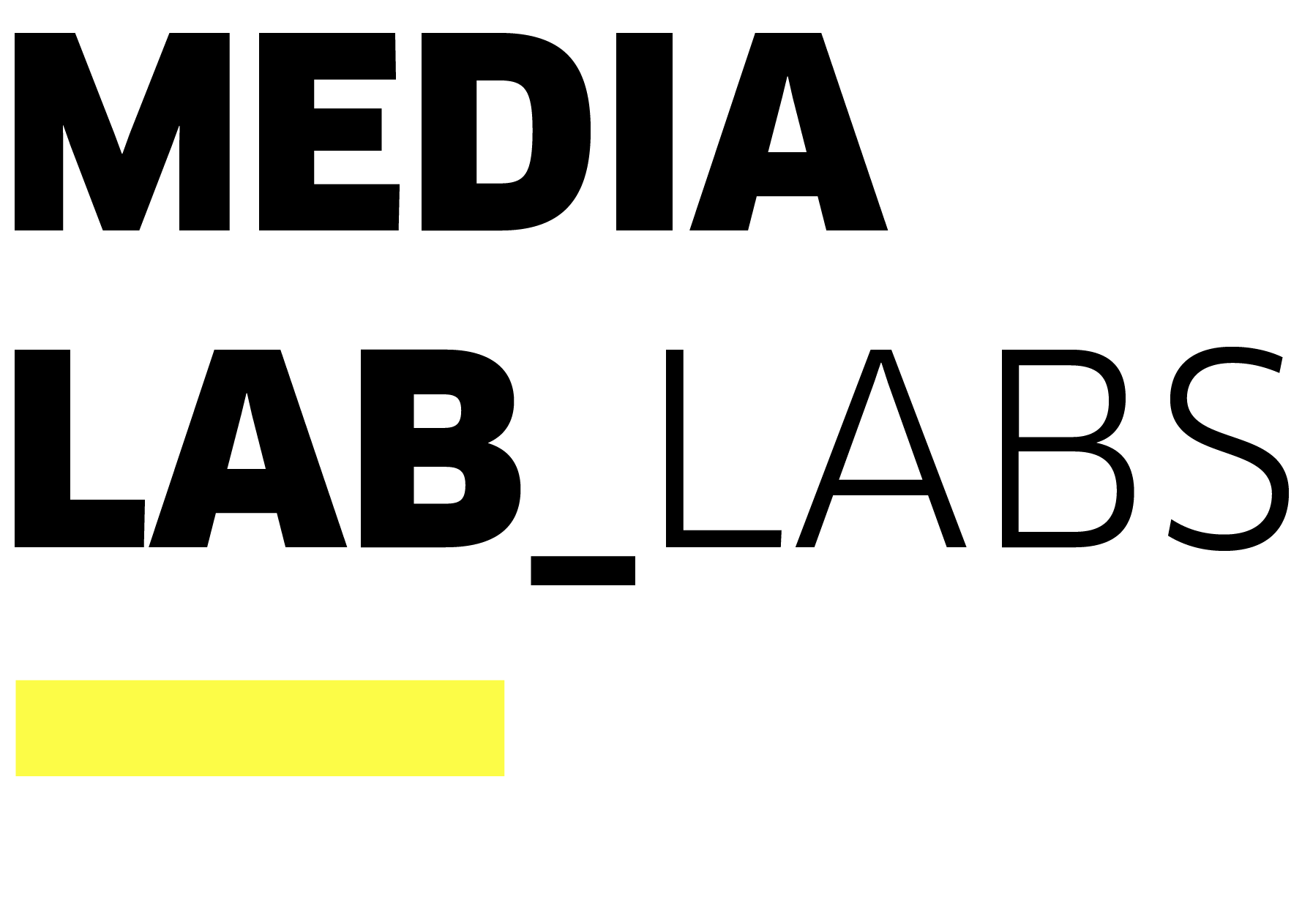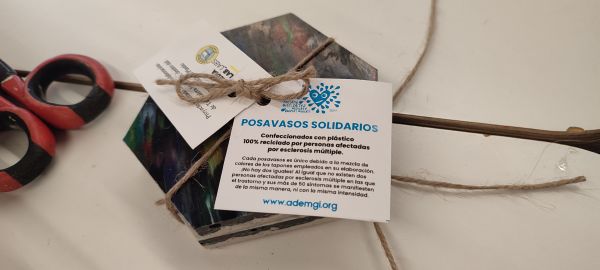Production of Coasters from Recycled Plastic.
These coasters have been donated to the Multiple Sclerosis Foundation of Euskadi for the “Mójate – Busti Zaitez por la Esclerosis Múltiple” awareness campaign, which takes place at the pools and beaches of Euskadi in July. The campaign raises awareness and provides information about the disease, while also raising funds to finance rehabilitation services for people with multiple sclerosis.
Step by step
The first step is select caps made of the plastic composition we need.
One method for identifying the type of plastic is by looking at the symbol embossed on them. These markings consist of three arrows forming a triangle with a number in the center. These are international codes that help identify the plastic type based on its chemical components and recycling classification.
- Number 1: belongs to plastics such as PET and polyester. This category covers the most basic types of plastic and polyester fibers.
- Number 2: refers to high-density polyethylene (HDPE) varieties, which are strong and highly resistant to acidic substances.
- Number 3: this number is reserved for PVC, a type of plastic that can be both rigid and flexible.
- Number 4: used to refer to low-density polyethylene (LDPE), a flexible material that can change shape easily without damage.
- Number 5: includes polypropylenes (PP), which are flexible, durable, and can resist most acids and solvents.
- Number 6: the plastic reserved for this number is polystyrene, a fairly hard and rigid type, more transparent than most other plastics.
- Number 7: used for other types of plastics, including acrylic, nylon, and polycarbonate. Most of these are not recyclable and are often combined with other polymers to create a wide variety of plastics and fibers.
In this case, we want to create the sheets using type 2 plastic (HDPE). The project can also be done with type 5 (PP) or type 4 (LDPE) plastics, but the plastic sheet’s settings would need to be adjusted accordingly.
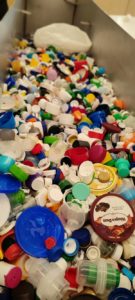
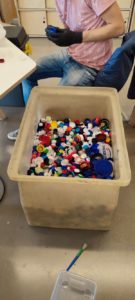


For this step, we used the Precious Plastic anti-jam shredder, a machine that allows us to grind various plastics into small flakes, thereby initiating the recycling process.
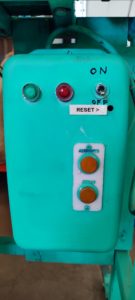
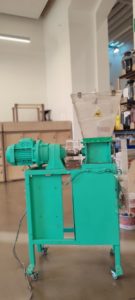
After obtaining the shredded plastic material, the next step is to melt and press the material.
For this, we use the semi-industrial press, from which we will obtain plastic sheets with dimensions of 1m x 1m and 6mm thickness.
We will select two metal sheets larger than the product we want to obtain and a metal frame with the thickness and dimensions we want to achieve.
The steps before pressing that we must follow to get the most uniform and clean result possible are:
- Polish and clean both metal sheets and the frame with acetone or alcohol.
- Coat the metal sheets and the frame well with silicone spray to prevent the plastic from sticking to them.
- Once the sheets are prepared, we move on to preheating the press to the target temperature we want to achieve, for about half an hour.
During this preheating, we will place one metal sheet in the press and the frame to heat up for about 30 minutes.
After that time, we will evenly spread the plastic flakes. It is important that they are well spread and there is enough material, as during the melting process, the gaps will fill in and the volume occupied by the flakes will decrease.
For this project, about 14 kg of shredded plastic was used to obtain one sheet.
After 1 hour and 20 minutes, we turn off the machine and let it cool without opening it. This way, we avoid the plastic sheet from deforming. It is recommended to leave it like this for at least 12 hours.
Once that time has passed, we can remove the sheet from the mold and proceed to the milling phase.
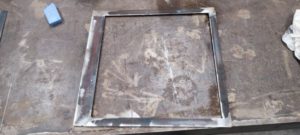
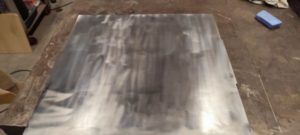
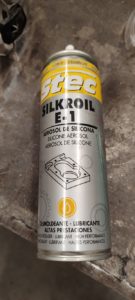
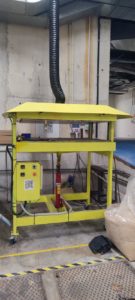
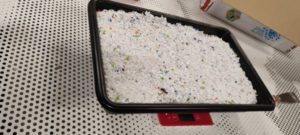
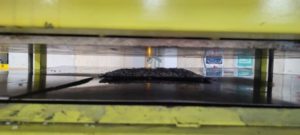
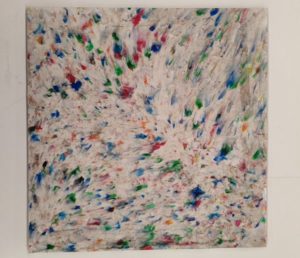
To cut the plastic sheet into the desired shape, we used the milling machine.
The laser cutter was ruled out during the testing phase, as it melted the material while cutting it.
In our case, the chosen shape for the coasters was a hexagon.
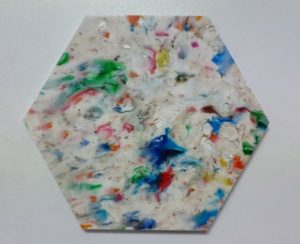
The last step before distributing the coasters was to remove any burrs they might have, as well as polish the surface to eliminate any impurities that might have remained.
For this, we used metal and sandpaper abrasives.
The packaging was done with string and a couple of explanatory labels about the process. Finally, they were distributed to the points of sale for the “Busti Zaitez – Mójate por la Esclerosis Múltiple” awareness campaign held on July 14, 2024.
